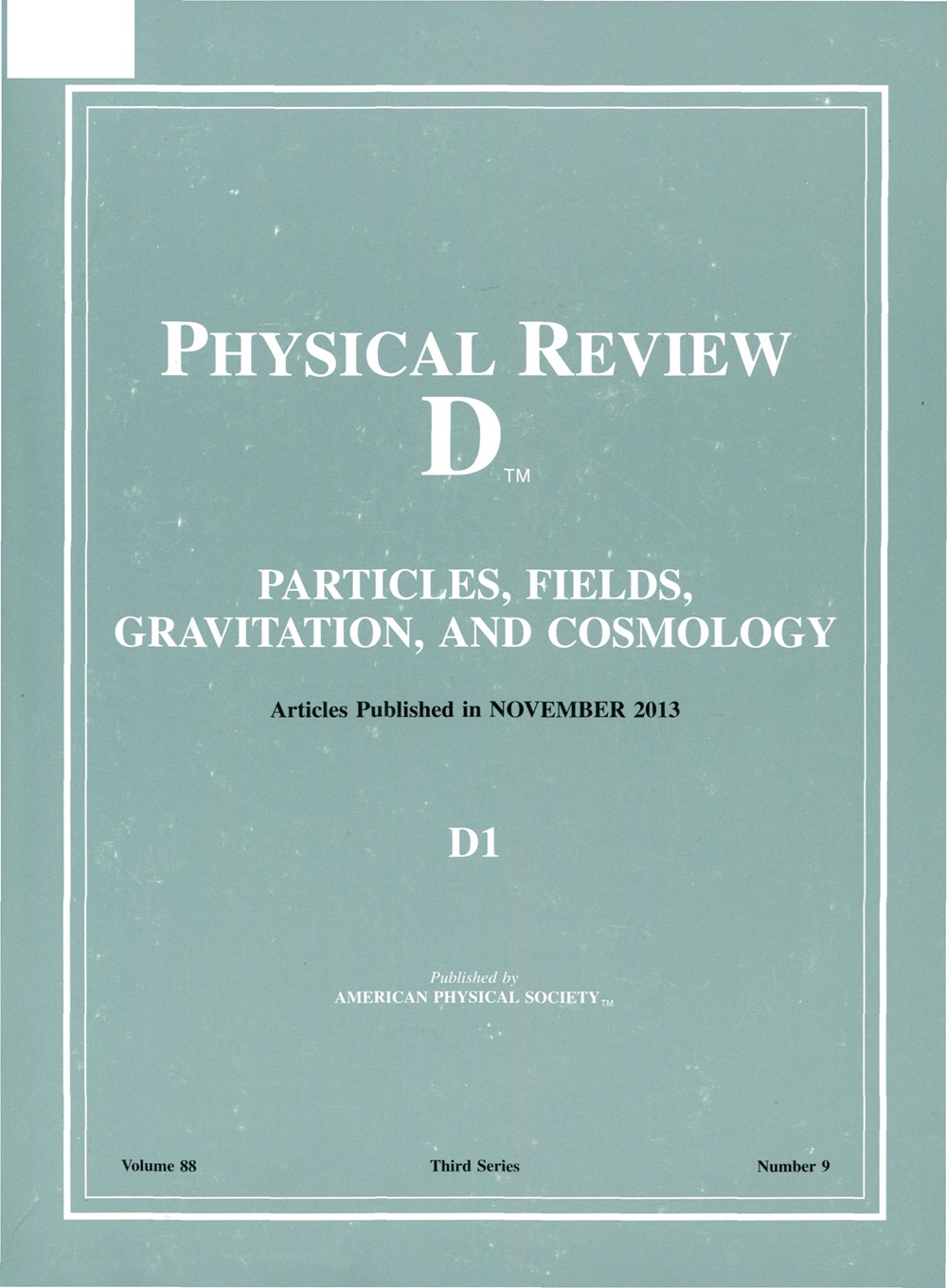用拓扑图方法研究迷人重子的强子弱衰变:更新
IF 5.3
2区 物理与天体物理
Q1 Physics and Astronomy
引用次数: 0
摘要
为了实现描述双体粲重子非轻子衰变的QCD近似SU(3)风味对称,存在两种截然不同的方法:不可约SU(3)方法(IRA)和拓扑图方法(TDA)。TDA的优点是它更直观、图形化,并且更容易实现模型计算。我们在TDA和IRA的框架内对现有的二体粲重子衰变数据进行了全局拟合。IRA中张量不变量最小集的个数与TDA中拓扑幅值最小集的个数相同,树型幅值最小集为5个,企鹅型幅值最小集为4个。由于我们采用了新的LHCb测量来修正衰变参数β和γ的符号模糊性,因此TDA和IRA中S波和p波振幅及其相移δP−δS的拟合结果比我们以前的分析更可靠,不确定性大大提高。这些结果可以在不久的将来进行测试。简要讨论了在每英里水平上粲重子扇区直接CP破坏的前景。2025年由美国物理学会出版本文章由计算机程序翻译,如有差异,请以英文原文为准。
Hadronic weak decays of charmed baryons in the topological diagrammatic approach: An update
There exist two distinct ways in realizing the approximate SU(3) flavor symmetry of QCD to describe the two-body nonleptonic decays of charmed baryons: the irreducible SU(3) approach (IRA) and the topological diagram approach (TDA). The TDA has the advantage that it is more intuitive, graphic, and easier to implement model calculations. We perform a global fit to the currently available data of two-body charmed baryon decays within the framework of the TDA and IRA. The number of the minimum set of tensor invariants in the IRA and the topological amplitudes in the TDA is the same, namely, five in the tree-induced amplitudes and four in the penguin amplitudes. Since we employ the new LHCb measurements to fix the sign ambiguity of the decay parameters β and γ S P δ P − δ S C P Published by the American Physical Society 2025
求助全文
通过发布文献求助,成功后即可免费获取论文全文。
去求助
来源期刊

Physical Review D
物理-天文与天体物理
CiteScore
9.20
自引率
36.00%
发文量
0
审稿时长
2 months
期刊介绍:
Physical Review D (PRD) is a leading journal in elementary particle physics, field theory, gravitation, and cosmology and is one of the top-cited journals in high-energy physics.
PRD covers experimental and theoretical results in all aspects of particle physics, field theory, gravitation and cosmology, including:
Particle physics experiments,
Electroweak interactions,
Strong interactions,
Lattice field theories, lattice QCD,
Beyond the standard model physics,
Phenomenological aspects of field theory, general methods,
Gravity, cosmology, cosmic rays,
Astrophysics and astroparticle physics,
General relativity,
Formal aspects of field theory, field theory in curved space,
String theory, quantum gravity, gauge/gravity duality.
 求助内容:
求助内容: 应助结果提醒方式:
应助结果提醒方式:


